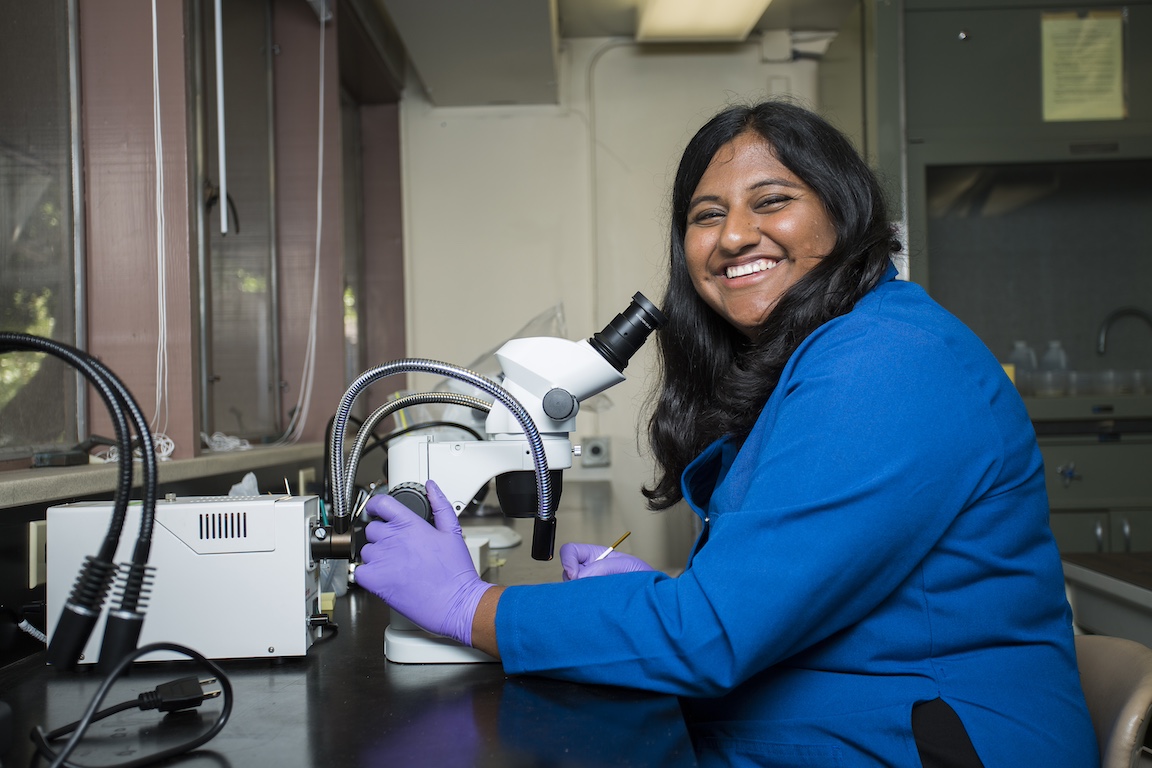Sustainability research at UCSB bridges a wide range of disciplines and utilizes various methodologies to provide up to date knowledge on topics such as resource management, climate change, biological health, the built environment and energy efficiency. Researchers from anthropology and environmental studies, to biology and physics, all work to investigate sustainable practices and find solutions to problems affecting our everyday lives. UCSB prides itself in providing numerous research opportunities to undergraduate students.
Here’s how you can get involved:
E-mail a faculty member
The best way to join a specific faculty member’s research group is to contact them directly. Browse through current sustainability research by topic (below) to get a feel for your interests. Pick a few faculty members in your interest areas and contact them directly. Show your enthusiasm and tell them what you have to offer.
Research by Topic
- Agriculture & Food Systems
- Built Environment
- Climate Change
- Cultural Perspectives
- Energy Efficiency
- Environment in Fine Arts & Media
- Environmental Economics
- Environmental Justice
- Environmental Media & Communications
- Environmental Policy, Governance & Engagement
- Marine / Aquatic Biology, Biodiversity, Ecology & Oceanography
- Marine Conservation & Fisheries Management
- Renewable & Alternative Energy
- Terrestrial Biology, Biodiversity, Ecology & Earth Science
- Urban Planning, Development & Transportation
- Water Resources Management
- *Other Environmental Research
Explore the Office of Research
Another way to explore your research options is to visit the Office of Research’s Undergraduate Research website. Here you will find more information on current research across multiple subject areas.
Conduct your own research
Itching to do your own research? Explore the College of Letters and Science Undergraduate Research and Creative Activities program which allows students to perform independent studies or senior theses on topics of their choice. Many programs can provide upper division academic credit for your work.
Research programs on campus
Many institutions and programs on campus offer research opportunities for undergraduates.
The Center for Energy Efficient Materials (CEEM) at the University of California, Santa Barbara, offers undergraduate students the opportunity to work on cutting-edge original research under the guidance of a graduate student mentor and faculty adviser. As CEEM interns, UCSB undergraduates work to develop innovative solutions to current and future clean energy challenges, focusing on four key areas: photovoltaics, thermoelectrics, solid-state lighting, and energy storage.
During the academic year, student interns work approximately 100 hours per quarter, and during the summer, the internship is a full time commitment and immersive experience. In addition to research experience, the program provides opportunities for professional development through workshops and research seminars.
Specific projects that students have been involved in include investigating performance degradation in polymer solar cells, synthesizing novel platinum-carbon composites for fuel cell catalysts, and studying the optimal geometry for maximum absorption in thin-film solar cells.
Additional Resources
University of California, Santa Barbara provides an array of support for sustainability research through the library including:
Research guides for a variety of sustainability-focused and related courses, such as Business Planning, Approaches to University Writing for Multilingual Students: Campus Sustainability, Environmental Studies Capstone, Writing about Sustainability, Writing for Environmental Studies, Conservation Ecology, and Environmental Politics and Policymaking. The course guides provide a variety of information and resources, such as links to articles, databases, websites, and techniques for accessing other library resources. For example, the course guide for Business Planning (WRIT 107B) includes a section that defines sustainability and corporate sustainability management, and it provides lists of books, reference materials, online articles, and websites that discuss how corporations incorporate and manage sustainability initiatives. Another course guide, Approaches to University Writing for Multilingual Students: Campus Sustainability (LING 12), includes a reference of key terms and search phrases for students to use in order to effectively access other library resources and has a links to outside resources, such as Sustainability Science Abstracts, that can be accessed through the University’s subscription. Each course guide provides different resources that are specific to the students needs when they complete research and other assignments for the course.
A collection of general Environmental Science resources such as information on Green Careers, Endangered Species, Field Guides, Environmental Science resources in the Santa Barbara area, and information on Sustainability in Higher Education are also available.
The UCSB Library also provides a subscription to the database, Sustainability Science Abstracts, and links to the freely accessible GreenFILE database. It has 40 current journal subscriptions in sustainable development and over 1000 in the environmental sciences.
